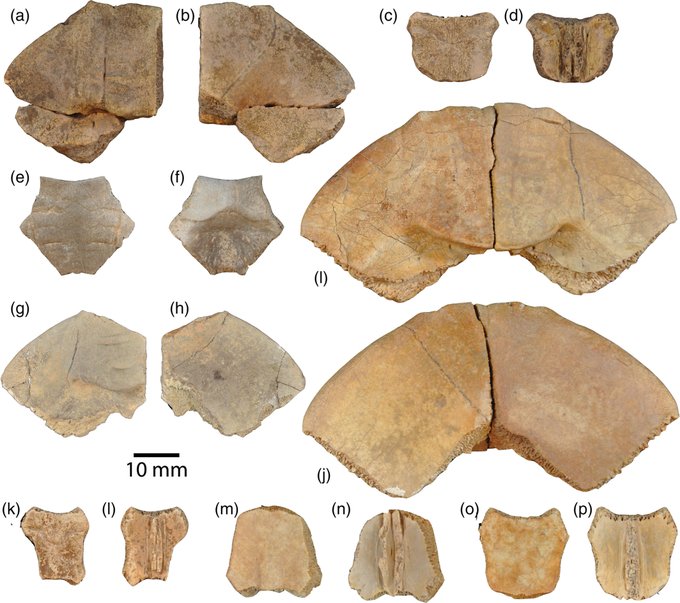morphometricのTwitterイラスト検索結果。 13 件
How does the BL change through time? Is the evolution polarity the same in different families? We used #geometricmorphometrics to explore shape variation of the inner ear, and test evolutionary rates within phylogeny for significant shifts cute illustration @CirsiumFerox 🙂
6/12
For #FossilFriday, Adrian et al. describe and evaluate new specimens of the Eocene geoemydid turtle Bridgeremys & apply geometric morphometric techniques to evaluate epiplastral variation among co-occurring geoemydids in the Uinta Basin.
https://t.co/JJxsSHrm0v
We have a new #GRAVIBONE paper out today in CR #palevol! How to retrodeform asymmetrical fossils (such as limb bones) using 3D geometric morphometrics and thin plate splines (TPS), accounting for intraspecific morphological variation. https://t.co/w8AhcSbobe
One more little twist to the titanosaur variability issue: "3D Geometric morphometrics of the hind limb in the #titanosaur #sauropod from #LoHueco (#Cuenca, Spain)" by @SrParamo et al https://t.co/Y0bRC7W6TM
After months of segmenting, landmarking, & coding, I'm pleased to announce that I'll be presenting some dissertation results at #SICB2022 next week. I'm in the DVM Best Student Poster Session, Tues 3:30-4:30. Stop by to chat about geometric morphometrics & axial regionalization!
This is very cool: I've been convinced for over 20 years that Haast's Eagle was bald, and now there's an 11-authored morphometric analysis that confirms that, despite being a bird of prey, it fed like a vulture. (pic: Katrina Kenny) https://t.co/xuF8WC8Ej1
Can primate morphotaxa be assessed with photographs? Find out the answer using 2D geometric morphometrics in this new open access article by Andrea Cardini and colleagues:
https://t.co/IfmOdkLxpO
#GeometricMorphometrics #Primates
@LeifBersweden @orchidtimelapse @LeifBersweden - How many #landmarks would you need to analyse these lips (a few more than Orchis)? 🤔#morphometrics
By analysing the 3D fang models using #GeometricMorphometrics and measuring the sharpness in key functional areas we were able to observe the variation present across different diets and across the venomous snake families.
Combining #genetic, geographic & #morphometric data to assess #species boundaries of 𝘋𝘪𝘢𝘤𝘢𝘷𝘰𝘭𝘪𝘯𝘪𝘢 pteropods shows the potential of #integrative approaches for diverse taxa, important for predicting species-specific responses to #ClimateChange.
https://t.co/lpwvAVRvOh
Check out the third Palaeontological Virtual Congress Article: Studying bipedal #dinosaur trackways using geometric morphometrics!
Mireia Costa-Pérez, José Joaquín Moratalla, and Jesús Marugán-Lobón
https://t.co/pg0m7Nu3oh
Preparing for a full day of morphometrics at #2019APW after a night full of earthquake shakes like:





























